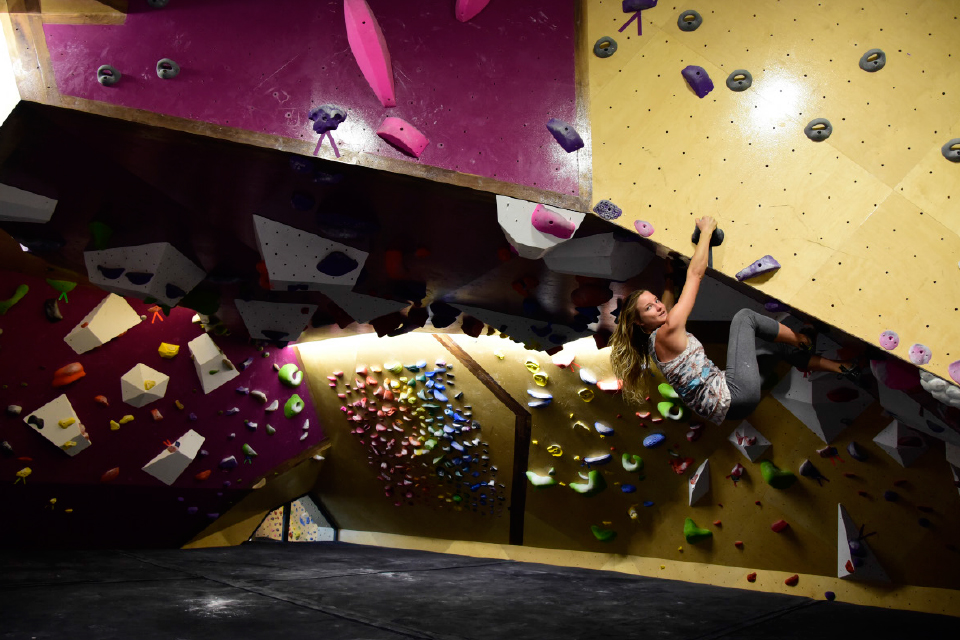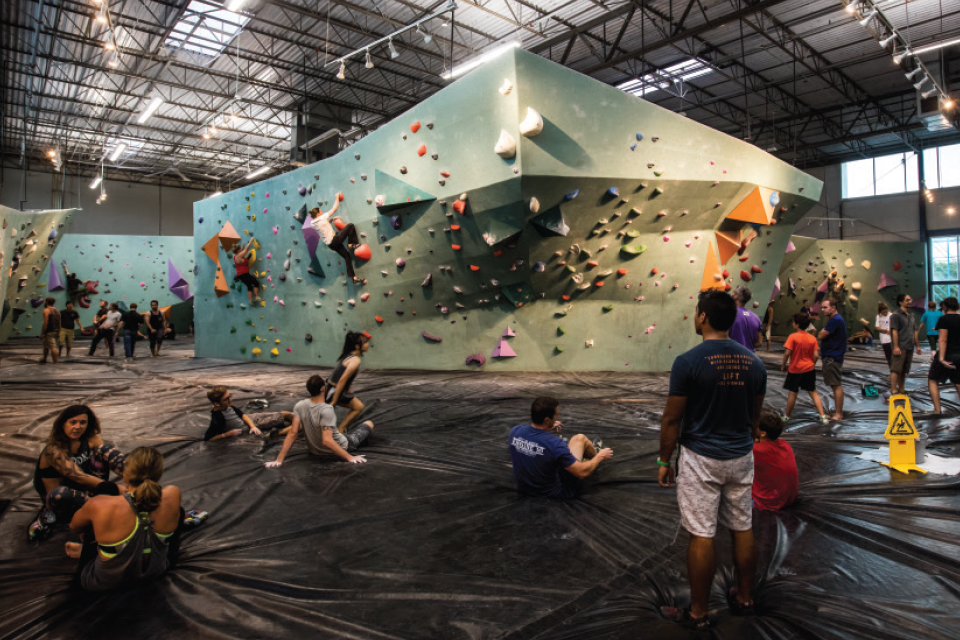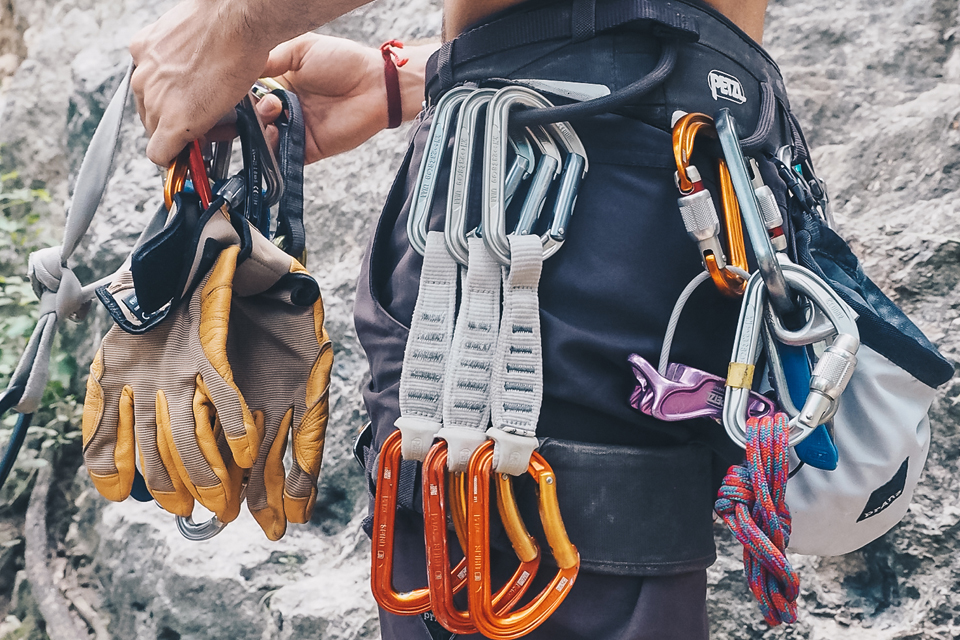Get a Grip
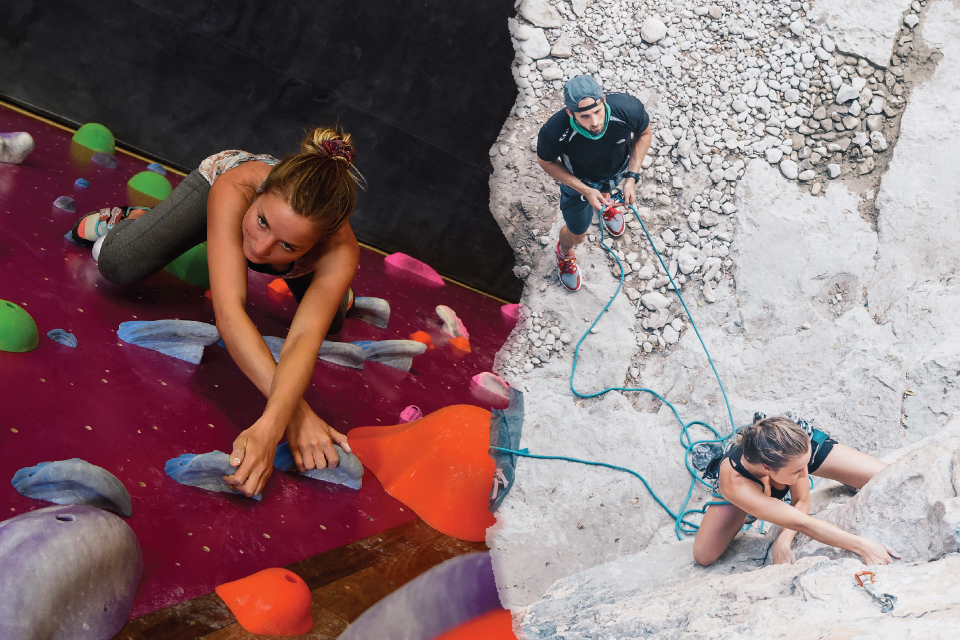
When I scrambled up my first rock face on the Barton Creek Greenbelt, I was instantly hooked (literally and figuratively). Coming from a meager athletic background, I always felt awkward trying out new sports. However, the mental attention required in rock climbing distracted me from my insecurities, and I found myself at the top of the route with no awareness of the lanky guys waiting below. Over a year later, I am still hooked. In fact, my passion for climbing has grown as I have immersed myself in the welcoming Austin climbing community. I’ve also grown a lot on a personal level through lessons on the wall; my ability to deal with stress and my overall body awareness have particularly improved through climbing regularly. The breath and mental attention required while pushing your limits culminate in a pristine moving meditation, especially when surrounded by nature (and with good company down below).
Here in Austin, we are fortunate to have convenient access to high quality indoor and outdoor climbing facilities. Below are the gyms I recommend trying out, as well as some of the most popular outdoor climbing spots in the greenbelt.
Indoors
Even though it’s possible to learn how to climb outdoors, most beginners will find gyms more accessible and practical for learning the basics. Austin has a great selection of indoor gyms–both provide supportive and casual atmospheres ideal for work, play, and community-building.
Crux Climbing Center
Located in South Austin, this impressive 22,000-square-foot facility includes both rope climbing and bouldering. Crux also features strength training areas as well as fitness and yoga classes. Crux really values the community-building aspect of the sport, with a nice lounge space to catch up with friends and regular social events ranging from mellow social gatherings to packed competitions. It boasts the largest indoor bouldering cave in Central Texas, and opting for the More Awesome Membership grants you access to the Thunder Dome 24 hours a day, seven days a week. Plug in your own music if you need a little inspiration to get in the zone while you’re climbing.
Equipment: Climbing shoes and harness recommended. All equipment available for purchase or rental. Free gear on first visit!
Note: General orientation is required for first-time visitors (anywhere between five to 30 minutes, depending on group size and skill level). Additionally, rope climbing and belaying require additional staff certification, so plan accordingly. (Classes are offered if you are new to climbing). For anyone eager to strap into the ropes and crawl up a wall, the auto-belay section of Crux requires no special training/certification or staff assistance.
Austin Bouldering Project
Situated in the heart of East Austin, Austin Bouldering Project offers walls exclusively crafted for bouldering, or climbing without ropes or harnesses. The routes tend to be shorter than sport routes, and the entire floor is padded with foam to ensure a soft fall. Meticulously placed holds make up “problems,” or climbing routes ranging from 13 to 17 feet high. ABP also offers a gym stocked with exercise equipment along with fitness, climbing, and yoga classes, all at no extra charge. ABP has a large mezzanine with plenty of comfortable spots for getting some work done or just hanging out. Finally, they have cold-brew coffee on tap and a delicious food stand with offerings made by Bento + Picnic for when your mind and body need some fuel.
Equipment: Climbing shoes and chalk bag are recommended, but only athletic shoes are required to boulder. Free rental shoes for first visit!
Keep reading to learn about places for outdoor climbing experiences!
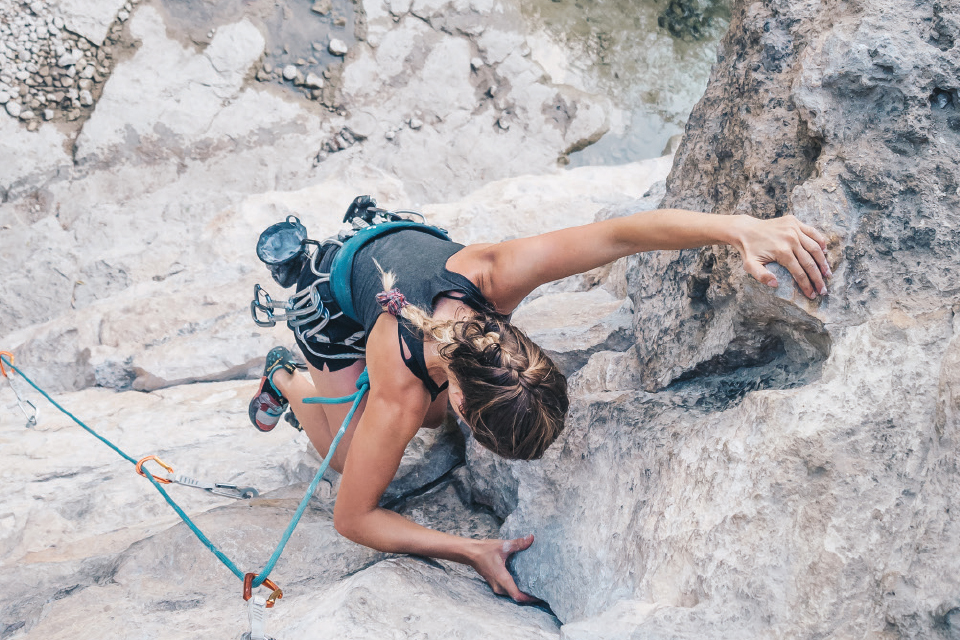
Photo by Travis Perkins
Outdoors
Lucky for outdoor enthusiasts, Austin has plenty of limestone crags for sport climbing. Sport climbing relies on preplaced bolts and permanent anchors fixed to the rock. Compared to traditional rock climbing, routes are typically shorter and more intense, emphasizing the physical aspect of the sport. This allows climbers to focus on moves and to lead climbs without worrying about placing nuts or cramming devices. A bolted climb requires a rope, harness, and quickdraws. Climbing shoes, a helmet, chalk, and a chalk bag are highly recommended. The three most popular and accessible rock walls on the Barton Creek Greenbelt are:
1. Seismic
(Loop 360, 3755-B, Capital of Texas Hwy)
This is one of the most popular walls in Austin with around 30 sport routes ranging from 5.6 to 5.12. Easy parking off-road or in the business park (if outside of business hours). Hike along the trail and you will see the wall across the creek. The wall faces east, and many routes are shaded by trees. Since these walls are so popular, many of the holds are polished (feeling slick due to overuse).
2. Gus Fruh
(Gus Fruh Trail entrance, 2642 Barton Hills Drive)
This well-shaded area is a good (and surprisingly uncontested) option for getting outside during those brutal Texas summers. It features walls and routes rating from 5.8 to 5.11. Also has some difficult bouldering; just don’t forget crash pads!
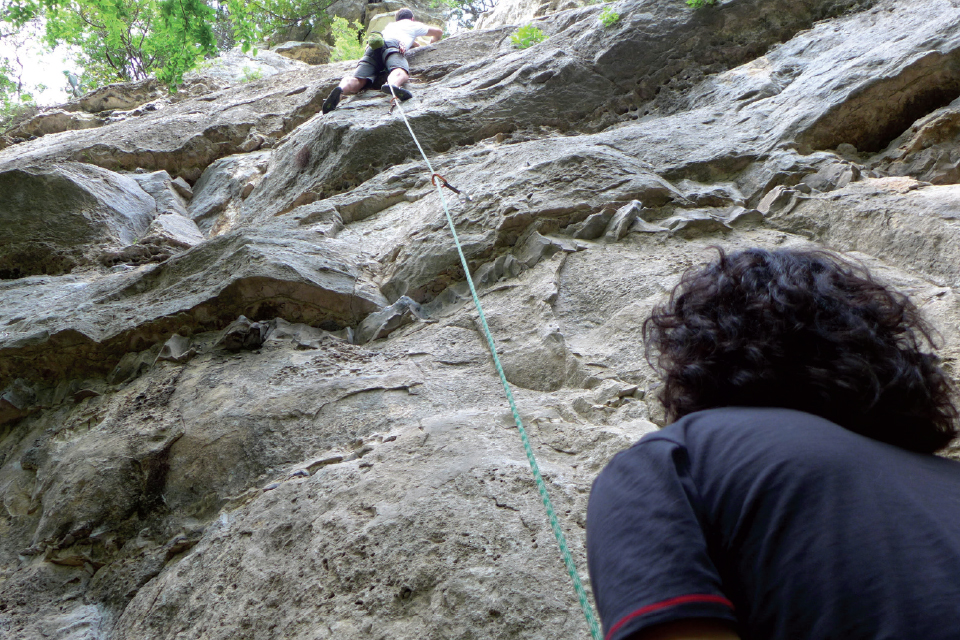
Photo by Patrick Lewis, flickr.com
3. New Wall
(Spyglass entrance, 1500 Spyglass Dr)
This area is better for more advanced climbers as most routes are between 5.10 and 5.12. It is shaded in the afternoons but still tends to be very hot in the summer.
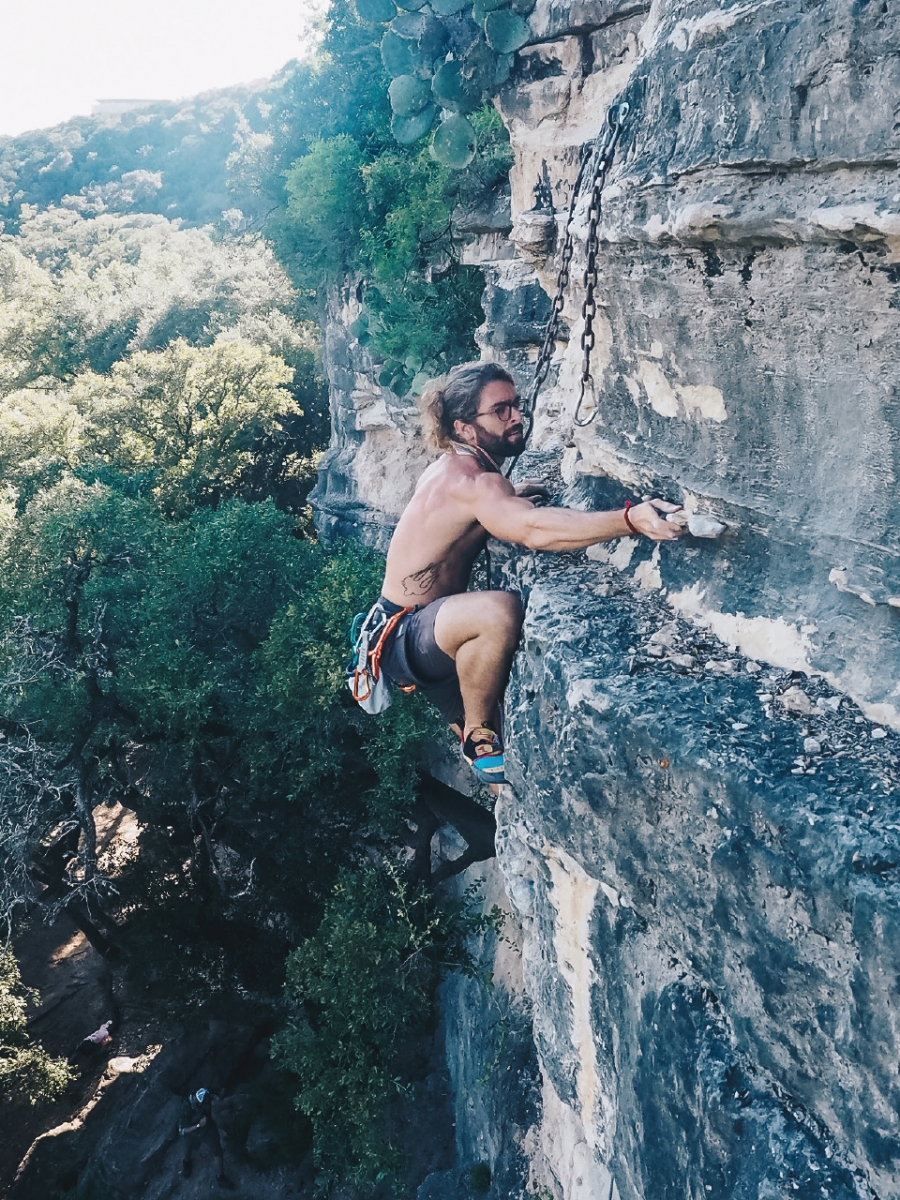
Photo by Liz Harroun
Travis Perkins crouched below the anchors of a challenging sport route at New Wall, moments away from finishing the route on lead.
Keep reading to understand Rock Climbing Ratings!
Rock Climbing Ratings
Difficulty ranges from 5.0 to 5.15
5.0–5.7: Easy for experienced climbers where most novices begin.
5.8–5.9: Where most weekend climbers become comfortable; employs the specific skills of rock climbing.
5.10: A dedicated weekend climber might attain this level.
5.11–5.15: The realm of true experts; demands much training, often working of a route, and much natural ability.
If it is slightly harder than 5.8, but not quite 5.9, it’s rated 5.8+. If it’s slightly easier than 5.8 but harder than 5.7, it might be rated 5.8-
Gear Tips
For beginners, the most important gear items to purchase are a harness, belay device, and shoes. With these, you can participate in bouldering, gym rope climbing, and greenbelt sport climbing, given that you go with people who have rope and quickdraws. Chalk bags are a relatively minimal investment and come in handy—especially in the Texas heat where hands get sweaty fast.
Shoes: Since sport climbs tend to be short and difficult, climbers often opt for moderate to aggressive shoes with a downturned shape. However, for beginners, it might be best to choose a more neutral shoe that is comfortable to wear as you work on your technique. Shoes should feel very snug.
Quickdraws: These pre-attached carabiner and sling sets are necessary as you begin to lead sport climbs. For greenbelt climbing, six quickdraws will cover nearly all the routes, most which do not surpass 50 feet.
Belay device: The two popular options for a belay device (needed to do any sport climbing) are the ATC and Gri Gri. A more affordable and lightweight option, the ATC is durable and easy to use. While it requires a bit more attention from the belayer, many prefer it to the Gri Gri because it allows more responsiveness to the climber. Gri Gris are assisted braking devices, making them a bit more dummy-proof. The Gri Gri weighs twice as much as the ATC but can facilitate the give and take of slack. Gri Gris are often a better option for lighter climbers who might struggle when belaying heavier partners.
Austin Climbing Book: This guidebook is a useful way to get to know all of the sport routes and deep water soloing spots in Austin and surrounding areas. Along with stunning color photos, the keepsake also includes some humorous writings from climbers as well as local history about the route developers. A new updated version will be released this fall and will be available at REI, Whole Earth Provision Company, Backwoods (off Bee Cave Road) and local climbing gyms. Check out austinclimbingbook.com for more info.
Keep reading for more climbing tips!
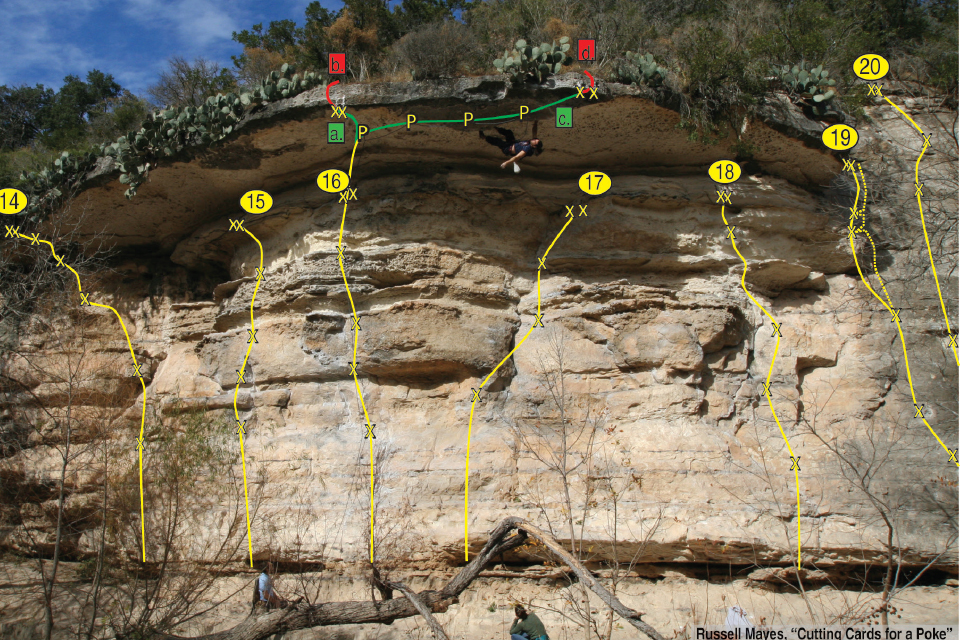
austinclimbingbook.com
Russell Mayes is shown climbing Cutting Cards, a 5.12b route on the Seismic Wall he developed by adding a hard route amongst many easy and moderate ones. This is John Hogge's annotated version forming a topographic map of the sport routes, more of which you can find in his guidebook.
How to get started outside
If you have been practicing in the gym for a while but don't feel comfortable making the transition to outside, try some of these options:
Rock-About Climbing Adventures: Offers basic climbing skills classes for those just getting started, camps for scout troops and kids, corporate outings, and courses for advanced climbers. rock-about.com
Texas Climbing Adventures: Offers group and private courses around Austin and surrounding areas. texasclimbingadventures.com
Texas Rock Climbing Meetup: Group of avid climbers of all levels who meet regularly at crags around Austin.
Physical Tips
Don’t forget about the feet. Over-gripping can pull the body off balance by making you lean into the rock. Sometimes it is better to loosen your grip and shift body weight to the feet in order to regain balance and conserve strength.
Tighten that core. This, along with awareness of overall body position, will help especially when dealing with polished limestone in the greenbelt.
Keep breathing! Breathe continuously throughout route, and take deep breaths before big moves to transition to your upcoming effort.
Belaying tips
Being a skilled belayer is just as important as developing your climbing technique, since you will (quite literally) have someone else's life in your hands. To get started, I recommend learning to belay in a gym. Crux Climbing Center offers a top rope belay class as well as a lead climbing class that includes dynamic and adaptive belay techniques for lead belay.
The balance between competitiveness and community is a great aspect of rock climbing in Austin. You can choose to compete with other climbers, with yourself, or not at all. But at the end of the day, you are a part of a community of individuals who enjoy getting outdoors, pushing themselves physically and mentally, and having fun. The biggest lesson I have learned so far from rock climbing is the importance of the process versus the end results. Staying present with each move, each route, and each day maintains motivation and counters destructive frustration from not meeting result-oriented expectations. Some days, I struggle on a route that I have completed before with no problem. I get worried that I might be regressing despite my hard work—but then I take a deep breath and remind myself that results come slowly and with patience. When I begin to appreciate the process and invite humility into my efforts, I find more fulfillment both on and off the wall.
